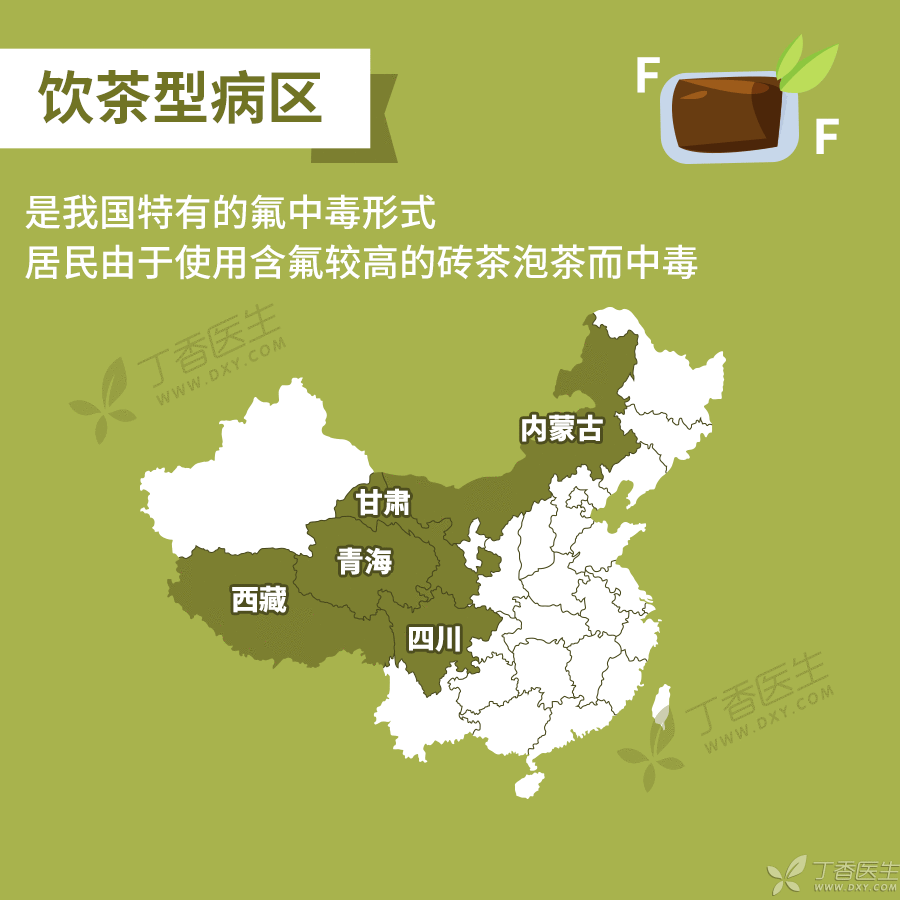
Fluorosis in China is an ancient and widely distributed disease.
Fluorosis has a long history in our country. Jin Ji Kang’s < < Health Preservation Theory > > records [teeth in Jin and yellow] describing the phenomenon of yellow or defective teeth of residents in this place [Jin] (now Shanxi), which is the earliest record of dental fluorosis in ancient books.
A nationwide fluorosis survey shows that all provinces and cities in the country have endemic fluorosis areas except overseas, with more than 200 million people affected. This shows that fluorosis has a wide impact in China.
What is endemic fluorosis
Endemic fluorosis (endemic fluorosis) is a geochemical disease, and its distribution has regional and family aggregation, which is manifested in the fact that most people living in the same area will suffer from this disease, while most people living in another area may not suffer from this disease.
The occurrence of endemic fluorosis is a systemic chronic poisoning disease caused by long-term intake of fluoride exceeding physiological requirements through air, drinking water and food by human or animals due to the presence of more fluoride in a specific geographical environment and continuous accumulation.
According to the main routes of fluorine exposure, fluorosis can be divided into three wards:



What is fluorine?
Fluorine is an essential trace element for human body, too much or too little will cause damage to health.
The physiological requirement of fluorine is 0.5 ~ 1.0 mg per day, which plays an important role in the formation of teeth and bones and calcium and phosphorus metabolism.
Appropriate amount of fluorine can protect our teeth and bones. As we all know, fluoride toothpaste can prevent dental caries, protect teeth from acid and alkali substances, and has bactericidal effect.
Although a proper amount of fluorine is necessary for human body, it will cause various damages if it goes beyond the safe range.
At present, the drinking water standard stipulates that the fluorine content in urban drinking water should not exceed 1 mg/L and that in rural areas should not exceed 1.2 mg/L. It is generally believed that there will be a risk of fluorosis if the intake exceeds the appropriate intake.

Does endemic fluorosis show what?
The main clinical manifestations of endemic fluorosis are dental fluorosis and skeletal fluorosis.
Dental fluorosis is an early manifestation of fluorosis, with white or dark brown plaques on teeth and even tooth defects. Dental fluorosis occurs in children’s permanent teeth, and long-term exposure to water or food with high fluorine content before tooth replacement is the main reason.
Serious damage is mainly skeletal fluorosis, which is manifested as joint pain, poor movement and even limb deformation.
Fluorosis has adverse effects on endocrine, nervous system, gastrointestinal system and cardiovascular system. It may also cause certain damage to children’s intelligence and cognitive ability.
How do we come into contact with fluorine in our daily life?
In daily life, we may be exposed to fluorine through digestive tract and respiratory tract.
Digestive tract: This is the main way for human body to ingest fluorine, including drinking high-fluorine water and eating plants planted on high-fluorine soil. Especially tea leaves and the like have a good enrichment effect on fluorine, especially concentrated tea bricks contain high fluorine.
There are also some fluorinated drugs, beverages, handicrafts and fluorinated substances used in dental treatment that will increase the chances of people being exposed to fluorine. It is reassuring that if we use fluorinated toothpaste according to the normal amount at ordinary times, fluorosis will not be caused.
Respiratory tract: Fluorine-containing gases also produced during volcanic eruptions and industrial production enter the human body through respiratory tract.
Prevention of Endemic Fluorosis in how?
According to different ward types, reduce fluorine intake.
For drinking water fluorosis areas, the fluorine content in drinking water should be reduced.
Change to low-fluorine water source. The water source should first consider surface water (river water and river water). If deep groundwater is selected as the water source, low-fluorine deep wells can be drilled and various sanitary indexes of water quality can be tested to ensure that the water quality meets the sanitary standards of drinking water.
In the ward without low fluorine water source, aluminum chloride, hydroxyapatite, bone charcoal and other fluorine removal agents can be selected to remove fluorine.
In the coal-burning fluorosis area, the main methods are to improve the stove, change the methods of baking kang food and warming the fire, such as not directly baking kang and preserving food on the coal fire, and not opening the stove for heating. Exhaust soot outdoors to prevent food from being polluted by fluorine.
The prevention and treatment of tea-drinking endemic fluorosis is mainly to drink low-fluorine brick tea.
For individuals, they should avoid ingesting too much fluorine, insist on using low-fluorine water sources after water improvement, and prevent indoor coal pollution.
It is also possible to reduce the accumulation of fluorine in the body by improving nutrition. Some nutrient elements in food, such as calcium and protein, have the effect of antagonizing fluorosis. It is recommended to eat more calcium and protein-containing foods such as milk and fresh vegetables.
